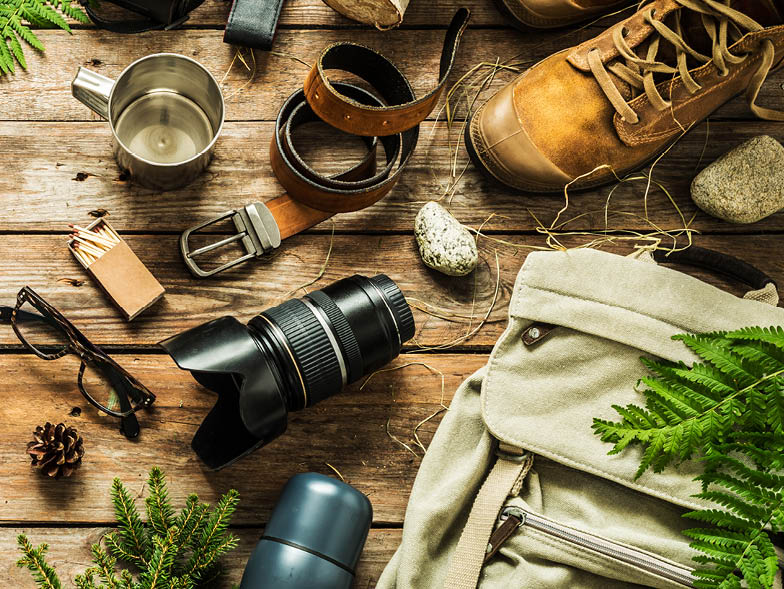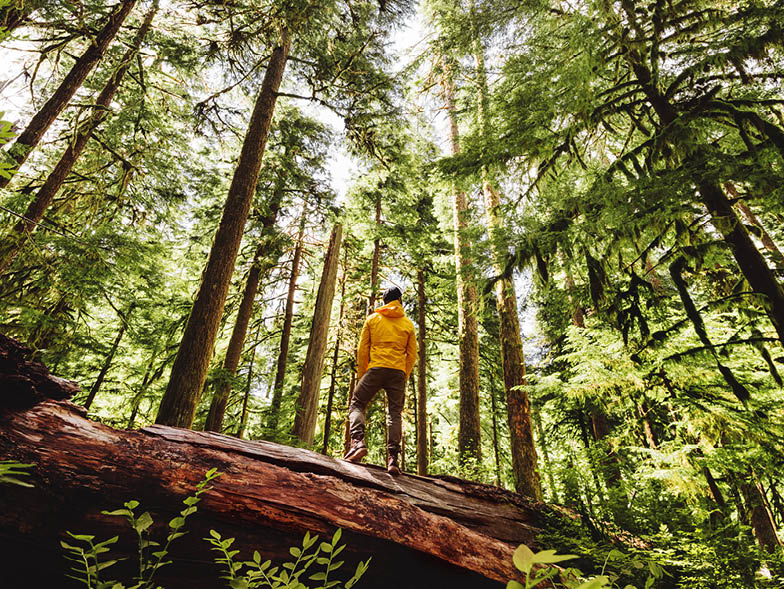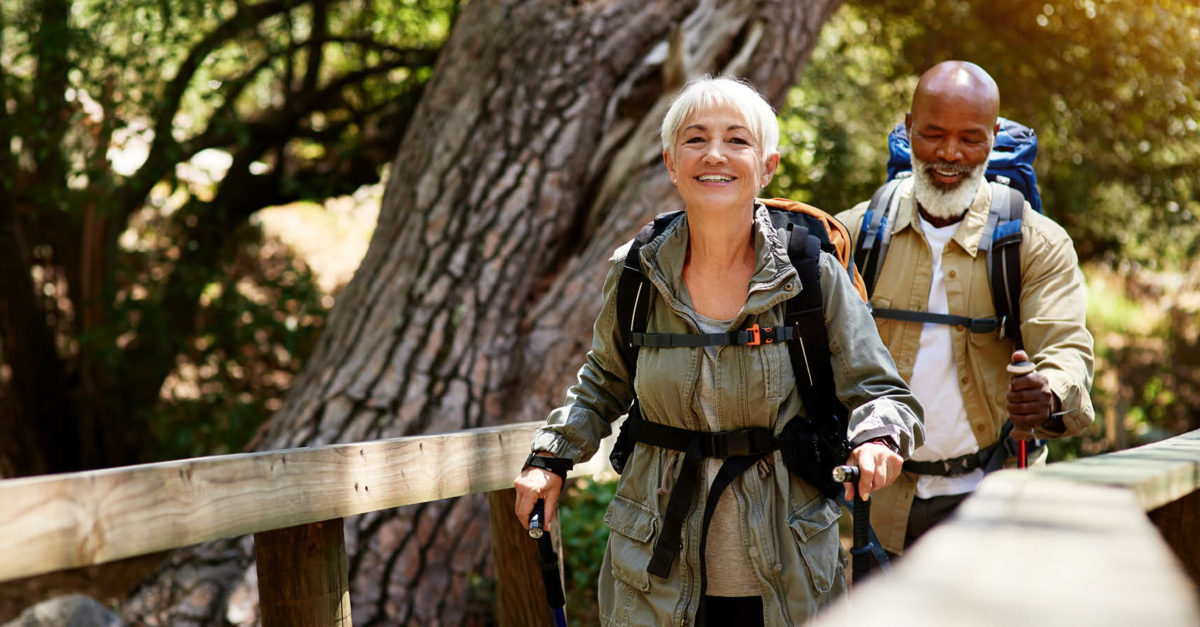Take to the Trail
Between 1910 and 1930, the Green Mountain Club of Vermont established the oldest long-distance hiking trail in the United States—appropriately dubbed the Long Trail. It inspired another recognizable hiking system along the East Coast, the Appalachian Trail, which is enjoyed by some three million people each year.
Although hiking has grown in popularity among the general public in the last few decades, it is and always has been a favorite pastime for many outdoor-loving Americans. It can feel intimidating for beginners—getting lost on the trail, running out of food or water, and even injury are very real concerns that shouldn’t be taken lightly. However, hiking is also an incredible way to connect with nature, it’s a wonderful form of exercise, and it can even help boost your self-confidence. (The feeling of accomplishing a hike is like no other!)
But before you hit the trail, there is a lot you need to know to make the most of your trip—and to protect yourself. Whether you’re embarking on a five-mile day hike or you’re planning on spending a full weekend in the wilderness, you’ll want to be as prepared as possible to ensure your hike is fun, safe, and memorable for all the right reasons.
A Breath of Fresh Air
If you’re on the fence about hiking, you should know that the health benefits it provides are innumerable. For starters, if you find yourself getting bored with your routine, exercising outdoors can fulfill your fitness quota without having to fight for equipment or spend an hour in a crowded gym. Hiking is a truly natural form of exercise that can give you the same benefits and more of a sweat session on the treadmill.
Cardiovascular health
Whether you’re hiking a beginner’s trail or something more challenging, walking up an incline is guaranteed to raise your heart rate. Try to keep a moderate pace throughout for steady cardiovascular exercise.
Stress reduction
Walking can help reduce adrenaline that has built up in the body. Exercise is also an endorphin-producing activity, which can help you feel more at ease.
Stronger bones
As we age, our bone density decreases, leaving us more prone to injury. Over time, hiking and walking can slow calcium loss and help improve bone health.

Getting Started
Now that you know some of the amazing health benefits hiking can provide, it’s time to learn the basics. If you’re just starting out, it’s important to familiarize yourself with what you might encounter on a hike, and plan accordingly.
- When selecting a trail to hike, keep in mind the elevation, entrance and exit points, and length. If you don’t want to hike in the dark, plan to start early enough to hike up and back before dusk.
- Always let a friend or family member know where you are going and how long you plan to hike—especially if you’ll be gone for more than a few hours.
- Review a map of the trail before heading out, and plan a route you’re confident you can tackle based on your skill and fitness levels.
- Pay attention to the weather, but plan for the unexpected. Keep items such as a rain jacket, portable shelter, and extra clothes in your backpack in case of emergency.
- Never stray far from the trail, and pay close attention to trail markers and signage so you stay on track.
Most parks and trails will have rules and restrictions posted at the entrances, but there are plenty of unwritten rules of the trail, as well. These guidelines exist not only to make the experience more enjoyable for everyone but also to help maintain the integrity of the trail and preserve the environment for future hikers’ pleasure:
- Many people hike to experience the peacefulness and beauty of nature, and outside noises like cell phones or music can be distracting. Avoid shouting if accompanied by other hikers, and keep cell phones in your bag.
- If you need to take a breather, step slightly off the trail to avoid impeding others.
- Make sure you don’t leave behind anything you brought, including food scraps, water bottles, and equipment.
- While hiking in groups, be sure to leave space for other hikers to pass. Hikers moving downhill should always yield to those moving uphill.

What to Pack
Wearing proper gear and carrying a backpack full of necessities can be the difference between a fun hike and a stressful one. Organizations like the American Hiking Society and outdoor sporting company REI recommend a list of ten essentials—no matter the length and intensity of the hike.
- Appropriate clothing: proper hiking boots or trail sneakers, layers, rain gear
- Extra clothing: spare socks, moisture-wicking socks
- Navigation: a map, a GPS or compass, a cell phone
- Water: ½ liter per hour per person, a portable filter
- Food: high-protein snack bars, trail mix, dried fruit
- Safety items: a fire-starting kit, a whistle, a headlamp
- First-aid supplies: bandages, ointment, bug spray
- Tools: a knife or a multipurpose pocketknife
- Sun safety: sunscreen, sunglasses, a hat
- Shelter: a lightweight tent or blanket

Get out There!
If you’re still feeling intimidated, just know that once you start and become more comfortable on the trail, hiking might become your favorite form of exercise. A good place to begin is by asking friends for recommendations of local trails they’ve enjoyed, as well as reading reviews online. Sites like AllTrails and TrailLink allow you to search for popular hikes based on length and difficulty, and some even include additional information like photos, descriptions of the wildlife, and more.
It doesn’t matter how challenging the hike is or how high you go, however—as long as you get out into nature and find your footing.
For more info, visit americanhiking.org









